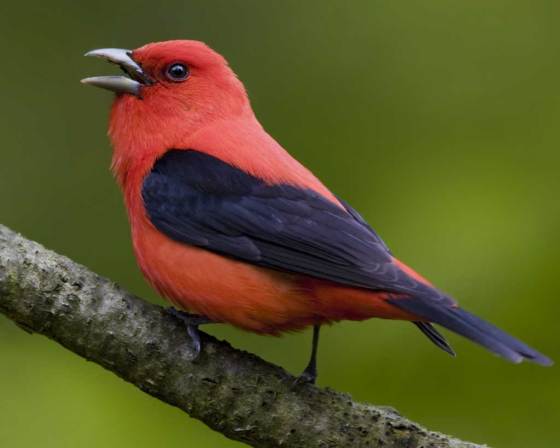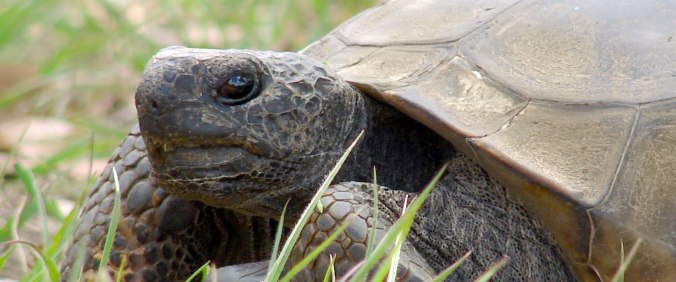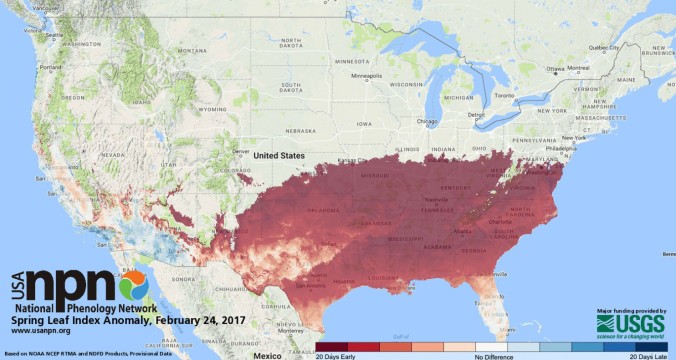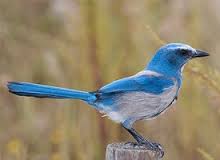
Scarlet Tananger
WHEN I WAS GROWING UP ON LONG ISLAND, IT WAS NOT UNCOMMON TO SEE COLORFUL SONGBIRDS IN MY NEIGHBORHOOD: TANAGERS, ORIOLES, BUNTINGS, AND MORE.
Later, as a Boy Scout, I recorded more than 50 local species for the birding merit badge.
Over the years, these sightings diminished, as woodland and other natural habitats were replaced by homes and asphalt.
But suburban and urban development are not the only factors affecting birds.
The domestic cat population is estimated to exceed 80 million; feral cats a similar number. Of the 80 million “home” cats, many roam free during the day or night and do what all carnivores do: hunt.
It’s likely that at any hour, at least 100 million cats are free to kill birds and small mammals. (Please note that all figures in this article vary up or down according to a particular study.)
Estimates place the number of birds killed by all cats at 1.4 to 3.7 billion annually, with most researchers agreeing that 2.4 billion is a fairly solid number, or roughly 24 per year per free-ranging cat.
Less appreciated because they go largely unseen is the number of small mammals (e.g., mice, voles, chipmunks) that are killed by cats, estimated at 27 billion annually. Feline neutering programs, although laudable, have only a marginal impact.
Habitat loss is the greater factor contributing to bird species, indeed all species losses. At least 30 bird species have gone extinct in the U.S., and hundreds more are endangered.
There are protected areas around the country where species survive in much-reduced variety and numbers. These range from local nature preserves to huge national parks and other state and federal protected areas. But these “oases” are under constant assault from business interests that have only intensified with the recent election of Trump as President.
By definition, habitat oases like parks and preserves are limited in their impact on species loss. They are largely “feel-good” endeavors, not solutions. Even the once-ubiquitous box turtle requires up to one square mile in which to roam. In addition, because these oases are largely discontinuous, many bird and other animal species have difficulty maintaining both their populations and their genetic vigor.
Florida’s gopher tortoise, scrub jay and panther are good examples of this difficulty.

Gopher Tortoise
Compounding the above-mentioned causes is the fact that migratory birds especially are falling out of sync with their environment due to climate change.
Spring in northern regions arrives two week or more earlier than it did 10 or 15 years ago. This means that birds arrive too late to feed on the burst of insect life that thrives on new vegetation soon turns bitter and is often indigestible to those insects.
Some, but not all birds, compensate for this by flying north faster or sooner. In addition, increasing global temperatures are causing southern plant species to march northward, further disrupting bird habitats.

Spring Leaf Index Anomaly, February 24, 2017
Migratory birds in particular are killed by building impacts, although most of us have been startled by a bird crashing into a picture window in broad daylight.
Estimates vary widely, but a minimum of 300 million birds are killed annually from such impacts, with some claiming that the number is closer to a billion. Similarly, several hundred million are killed by vehicle impacts each year.
The synchrony is obvious: As human populations increase, wild habitats are reduced with concomitant decreases in the numbers and variety of wild populations, all while the survival risks to those populations increase.
Of course, some will say, “What’s the big deal? They’re only birds.”
But like the proverbial canary in the coal mine, bird losses are indicative of a greater world problem: as stewards of the natural world, we have been a failure, both individually and collectively.
To paraphrase Pete Seeger’s tune: “Where have all the songbirds gone? / Long time passing . . .”

Florida Scrub Jay
Bill Britton is a freelance writer for John Hopkins University and a contributing editor for Vero Communiqué.
Looks good.
+++++++++++++++++++++++++++++++++++++++++++++++++ Bill Britton Bayville, NY to Vero Beach, FL “History repeats itself; the first time as tragedy, the second time as farce.” —Karl Marx Semper Fi
________________________________
LikeLike
Hhhmmm….it appears that you left out one major bird killer in some areas of the country:
https://www.sciencedaily.com/releases/2016/09/160929143808.htm
Also, temperatures vary year to year but a true trend takes hundreds of years to establish. Prediction models for just 20 and 30 years out can also be faulty or skewed depending upon the bias of the researcher. The UN actually changed its tune regarding the rise in temperature and its impact on global warming recently. As has Al Gore.
Like man, many species will adapt to minor changes in their environment. Birds may change their migration patterns or clocks or not. Over the next 10 years, any real warming trends (if there are any) could trend down and the birds will be happy.
It’s also true that for thousands of years animal and plant species have been dying off through no fault of man. Unless the Oriole population has dwindled to a tiny few, there is no cause for alarm.
All of that said, the bottom line is this – what would you have bird lovers do to reduce the temperature of the US – or the globe for that matter? There is no sound science (or shall we say consensus?) that outlines specific steps that everyone on the plant can or will do that will drop the temperature an iota of a degree.
I’m much more concerned about the migration of illegals across our southern border at this point – that is a matter of life and death for humans.
LikeLike
Just a couple more thoughts and conclusions…
“Migratory birds in particular are killed by building impacts… box turtle requires up to one square mile in which to roam… habitat oases like parks and preserves are limited in their impact on species loss. They are largely “feel-good” endeavors, not solutions.
What ARE the solutions? Birds won’t be killed as much if we’re living in mud huts instead of buildings with windows? We should not build a new road because it will reduce the box turtle’s range? This appears to be leading to the Greenie’s utopia of strict restrictions on where we can all live – reducing new development space to a few miles while making much of the country’s land owned by the government and off limits to even hikers – turning it back to wilderness.
Obama began the process by signing EO’s making millions of new acres off limits to Americans. https://www.washingtonpost.com/news/energy-environment/wp/2015/07/10/in-massive-expansion-of-lands-legacy-obama-creates-three-new-national-monuments/?utm_term=.f779ff675cff
“But these “oases” are under constant assault from business interests that have only intensified with recent election of Trump as President.” So, even though Trump has been in office 5 quick months – you managed to find a way to blame him for the demise of bird and turtle species…good going.
This started out as an article supporting the euthanasia or sterilization of feral cats…something many communities in Florida are struggling. But true to form, it morphed into a propaganda piece and an attack on American life, making us the bad guy, offers no concrete solutions except dramatically reducing our lifestyle and works in a typical hit on the President.
By the way, I can’t help but think of the mother of the green movement, Rachael Carson’s book…”A Silent Spring” where she blamed DDT for killing all the birds and causing cancer and encouraged it’s banning around the world. What followed and is still prevalent today – thousands of African children’s deaths each year from malaria carried by mosquitoes. Mosquitoes that DDT would kill but can’t be used.
LikeLike
I am not blaming Trump. I was only stating a fact. In a move that could allow him to roll back the protection of lands designated by Presidents Bill Clinton, George W. Bush and Barack Obama, Trump signed an executive order that reviews enforcement of the law that gives him power to designate lands as national monuments.
The order, which Trump signed at the Interior Department, could lead to the reshaping of 24 national monuments, including Grand Canyon-Parashant National Monument, Grand Staircase-Escalante National Monument and Basin and Range National Monument, as well as a host of Pacific Ocean monuments, including the World War II Valor in the Pacific National Monument.
Though Interior Secretary Ryan Zinke cast the move as a way to include local voices in the decision to designate monuments, the review of the Antiquities Act — which was first signed by President Teddy Roosevelt in 1906 — stands in stark relief to years of bipartisan work at conserving lands.
LikeLike
There are many connotations for “conserving land”. I think we should stick to the feral cat problem as a more productive means of reducing bird deaths.
LikeLike
One of the birds that were facing extinction from DDT use was our national symbol, the bald eagle.
Re current use: Under the 2001 Stockholm Convention, a United Nations-backed treaty that seeks to ban certain pesticides, DDT is permitted only for use in controlling malaria. Malaria is a mosquito-borne illness that kills almost a million people, mostly children, in sub-Saharan Africa every year. More than 100 countries signed the Stockholm Convention.
LikeLike
Destroy any one invasive-species vermin cat = save the lives of thousands of valuable native animals. That’s the TRUE suffering-animal equation. Saving NATIVE wildlife from being tortured to death by being disemboweled-alive or skinned-alive and left to suffer to death for their cats’ discarded play-toys, or the offspring of valuable native wildlife left to starve to death after the parents are killed or after their cats have destroyed all of their ONLY food-sources. And all done to NATIVE animals that actually belong here by just ONE of their invasive-species vermin cats.
All NATIVE wildlife on my lands is now returning to normal, it rebounded faster than I could have ever hoped for. I estimate about 1 returning or 1 never-seen-before native species of animals arrived on my land PER DAY for 5 years after every last one of hundreds and hundreds of their vile community-vermin cats were shot-dead and safely buried. That’s a LOT of species that cats destroyed or starved to death during their 15 years here.
I now feel nothing but immense pity for anyone who has their cats around them. They have made their own lives, and the lives of all others (human and animal), as dismally bereft and empty as any of these lonely and unwanted decrepit cat-ladies, and you don’t even realize it.
The lifelong rewards for destroying and disposing of every last one of their invasive-species vermin cats on anyone’s lands are priceless and immeasurable.
LikeLike
When/If you find out that your elected-officials are really just spineless, disney-cartoon-educated, cat-licking imbeciles (who deeply swallow the unsubstantiated claims of mentally-deficient, manipulative, and LYING cat-hoarders), those who are in favor of destroying everyone’s property and lives, spreading 3dozen+ deadly diseases that cats spread to humans today, killing off all your NATIVE cat-species with feline diseases, and seals, dolphins, whales, even manatee, and inland otters from cats Toxoplasma gondii parasite, and torturing to death all our native wildlife with their vermin invasive species cats; then if you live next-door to a TNR cat-hoarder here’s some further help for you to PERMANENTLY solve the problem that these demented and astoundingly disrespectful TNR cat-hoarders cause before they ruin your lives even further — until the next election.
Just Google for this complete string (include the quotation marks):
feral cats “Licensing and laws do nothing” “live where its not legal to use firearms” “already learned to evade all trapping methods for”
I have posted that valuable (and lengthy) information on hundreds, if not thousands, of sites that bring-up the issue of free-roaming vermin cats.
Therein you’ll find every effective method that you can employ to finally and permanently solve this invasive-species vermin cat problem completely in under 2 seasons of anyone’s time — no matter what laws govern your lives, no matter where you live, no matter how many cats infest your lands. And at costs affordable to any individual, any community, any nation. It worked 100% where I live — and it only cost me 1/3rd-cent PER CAT for hundreds of disease-infested vermin cats infesting my lands. Total cost less than the price of two starbux coffees.
LikeLike
Thank you for your spirited reply. You have obviously seen the change that has come over your immediate environment by eliminating this invasive species–cats. My experience has been less dramatic but I believe worth noting. Since moving to Florida in 2004, I have lived in two subdivisions. Besides larger water birds, the bird varieties have been very limited with the notable exception of mockingbirds and crackles, both of which harassed the dickens out of the cats that strolled the neighborhood night and day. Recently, I moved to a large senior community because of my wife’s health issues. I’ve not seen one cat, although I suspect that there are a few confined to their owners’ apartments, complete with litter boxes (another reason not to have a cat). The number and variety of birds outside my window has been a pleasant surprise, and I even spotted a scrub jay. . . . Best, Bill Britton
LikeLike
Here’s the part I edited-out due to post-length-restraints. They have no idea what they are all now missing in their lives when allowing their community-vermin cats to wantonly destroy everything.
…I get to hear owls hooting again every night, a sound I had not heard for 15 years because cats had destroyed all their visible/attainable food sources. One so tame it sits on a branch about 10 ft. from my door. It caught a vole I had disturbed one time while I was walking through my yard, the owl landing nearly between my feet to capture the vole. It just looking straight-up at me all proud about its catch. I had to step over that owl to let it continue on in its proud moment. (I named it “Who”, so I can do my own truncated comedy-routine when a visitor asks what that owl is doing right there. “Who?” 🙂 ) Hawks soar over my trees again. Chipmunks treat me to a chipmunk-chorus most every calm summer evening again, another sound I had not heard for 15 years. (Ever hear that sound? It sounds like a melodic wooden wind-chime coming from every direction in the forest as they call to each other, each clucking with their own unique note of their chorus before bedding-down. It’s an astounding experience to hear it just once in your life but I get to hear it most every calm warm day before sunset, sometimes in calm late mornings too before they take their noon nap.) A family of Gray Fox (one of the most beneficial native animals to grace our lands) made a den near my home. I often see them bringing a clownish kit or two along with to patrol my yard for any edibles. Birds I had never seen in my life before now nest here. 2 of the species are warblers listed in the top-10-songbirds of the world. What an amazing sound to awaken to during warm months. I wasn’t a birder before but these amazing animals are now convincing me otherwise. …
They now all suffer dismally bereft and empty lives, indeed.
LikeLike